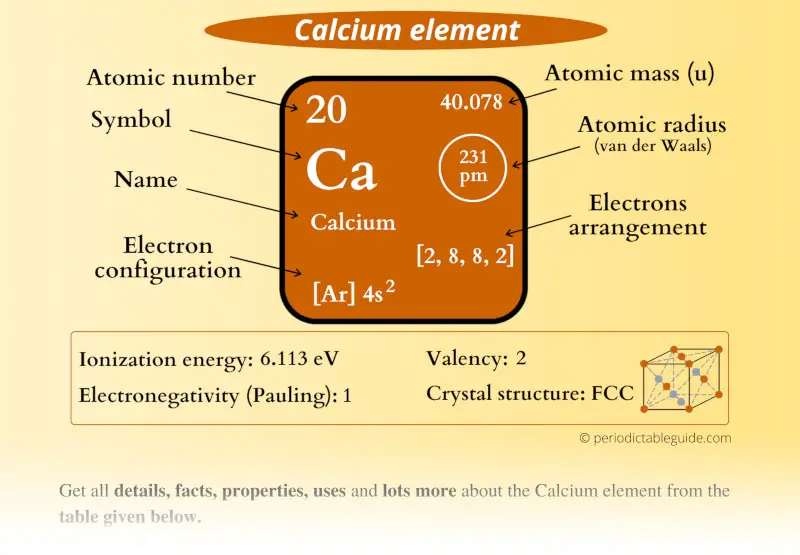
This is a SUPER easy guide on Calcium element.
In fact, the table mentioned below is the perfect information box (Which gives you every single detail about the Calcium element in Periodic table.)
So if you want to know anything about Calcium element, then this guide is for you.
Let’s dive right into it!
Calcium Element (Ca) Information
| Appearance | 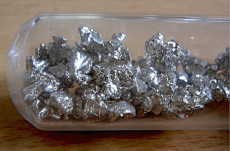 Dull silvery grey color |
| State (at STP) | Solid |
| Position in Periodic table | 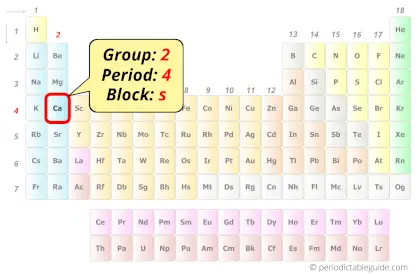 Group: 2, Period: 4, Block: s |
| Category | 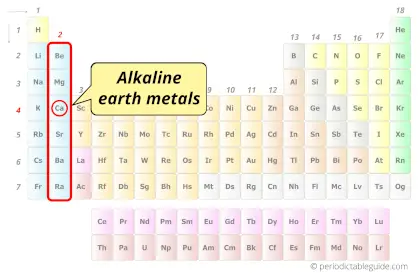 Alkaline earth metals |
| Atomic number or Protons | 20 |
| Neutrons | 20 |
| Electrons | 20 |
| Symbol | Ca |
| Atomic mass | 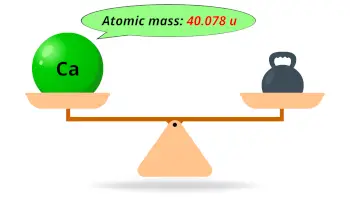 40.078 u |
| Electrons arrangement or Bohr model | 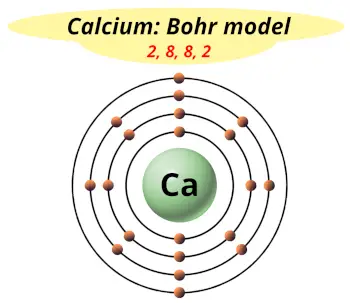 2, 8, 8, 2 |
| Electronic configuration | [Ar] 4s2 |
| Atomic radius | 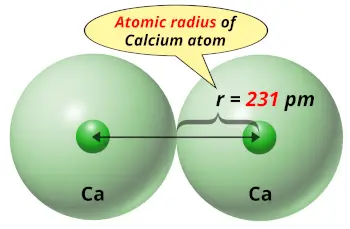 231 picometers (van der Waals radius) |
| Valence electrons | 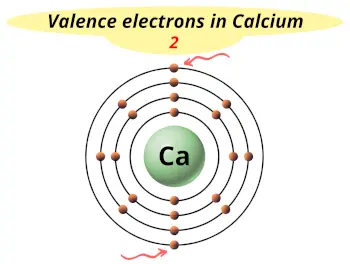 2 |
| 1st Ionization energy | 6.113 eV |
| Electronegativity | 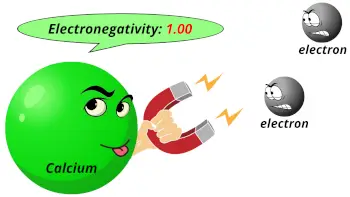 1.00 (Pauling scale) |
| Crystal structure | 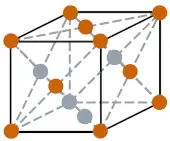 FCC (Face centered cubic) |
| Melting point | 1115 K or 842 °C or 1548 °F |
| Boiling point | 1757 K or 1484 °C or 2703 °F |
| Density | 1.55 g/cm3 |
| Main isotope | 40Ca |
| Who discovered Calcium and when? |  Humphry Davy in 1808 |
| CAS number | 7440-70-2 |
Calcium in Periodic table
Calcium element is in group 2 and period 4 of the Periodic table. Calcium is the s-block element and it belongs to alkaline earth metals group.
| H | He | ||||||||||||||||
| Li | Be | B | C | N | O | F | Ne | ||||||||||
| Na | Mg | Al | Si | P | S | Cl | Ar | ||||||||||
| K | Ca | Sc | Ti | V | Cr | Mn | Fe | Co | Ni | Cu | Zn | Ga | Ge | As | Se | Br | Kr |
| Rb | Sr | Y | Zr | Nb | Mo | Tc | Ru | Rh | Pd | Ag | Cd | In | Sn | Sb | Te | I | Xe |
| Cs | Ba | La* | Hf | Ta | W | Re | Os | Ir | Pt | Au | Hg | Tl | Pb | Bi | Po | At | Rn |
| Fr | Ra | Ac** | Rf | Db | Sg | Bh | Hs | Mt | Ds | Rg | Cn | Nh | Fl | Mc | Lv | Ts | Og |
| *Ce | Pr | Nd | Pm | Sm | Eu | Gd | Tb | Dy | Ho | Er | Tm | Yb | Lu | ||||
| **Th | Pa | U | Np | Pu | Am | Cm | Bk | Cf | Es | Fm | Md | No | Lr |
←Move to: Potassium (K) element – Periodic Table
→Move to: Scandium (Sc) element – Periodic Table
Why is Calcium in Group 2?
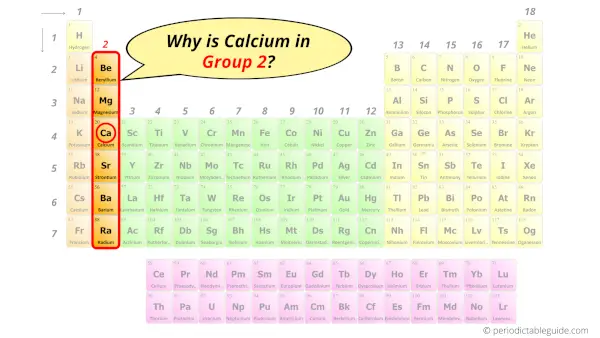
Do you know, how many electrons can be accommodated in the first shell, second shell, third shell, fourth shell, etc…?
Here is the table showing the capacity of orbits to hold electrons.
Number of electrons in shells.
| Orbit / Shell (n) | Maximum no. of electrons this orbit can hold |
| K shell, n = 1 | 2 × 1² = 2 |
| L shell, n = 2 | 2 × 2² = 8 |
| M shell, n = 3 | 2 × 3² = 18 |
| N shell, n = 4 | 2 × 4² = 32 |
Thus,
- 1st shell can hold 2 electrons.
- 2nd shell can hold 8 electrons.
- 3rd shell can hold 18 electrons.
- 4th shell can hold 32 electrons.
Now the atomic number of calcium (Ca) is 20.
Hence the electron arrangement in calcium is 2, 8, 8, 2. And the electron configuration of calcium is 1s2 2s2 2p6 3s2 3p6 4s2.
This electron arrangement and electron configuration indicates that the outermost orbit (i.e orbit number 4) of calcium element has 2 electrons.
Hence, it lies in group 2.
Why is Calcium in Period 4?
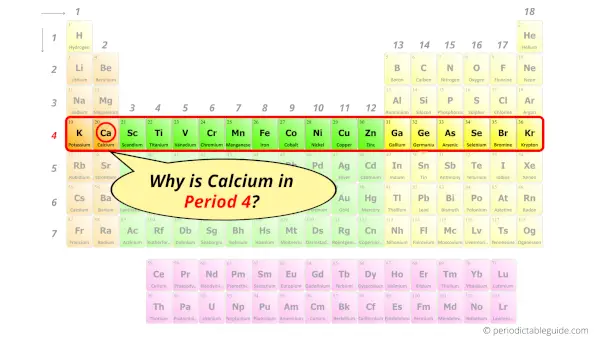
Let me ask you a question.
How many shells does calcium have?
It’s 4. Right?
You have already seen the bohr model of calcium atom in the above table.
From the Bohr model, it can be found that the number of orbits or shells in calcium is 4. Hence, as calcium has 4 orbits, it lies in period 4 of the Periodic table.
Why is Calcium in s-block?
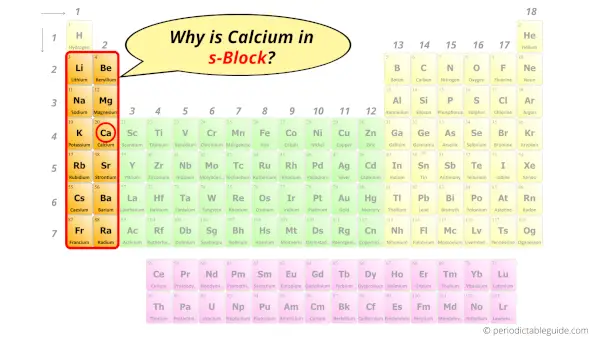
Before knowing this reason, first of all I want to ask you a simple question.
How can you determine the blocks-wise position of elements?
The simple answer: The elements will lie in the s, p, d or f block will completely depend upon the subshell in which the last electron will enter.
For example; the electron configuration of calcium is [Ar] 4s2.
So the last electron of calcium enters the s-subshell or s-orbital.
Hence, calcium is the s-block element.
9 Interesting facts about Calcium
Interesting facts about calcium element are mentioned below.
- Calcium is a very essential element for all living organisms.
- Our teeth and bones contain calcium in it.
- Calcium is the 5th most abundant element (by mass) found in the earth’s crust.
- Calcium is also the 5th most abundant element present in the human body.
- Calcium ions are also found dissolved in the sea water.
- Out of all other metallic elements, the calcium element is the most abundant metallic element found in the human body.
- Calcium is also present in soil and it controls the pH level of soil. Calcium is an alkaline earth metal, so more calcium present in the soil results in alkaline soil (or soil having pH higher than 7).
- The requirement of calcium in the human body is fulfilled by eating (or drinking) calcium rich foods like yogurt, cheese, milk, spinach, etc.
- Human body requires vitamin D to absorb the calcium from food.
Properties of Calcium
The physical and chemical properties of calcium element are mentioned below.
Physical properties of Calcium
Physical properties of calcium are mentioned below.
- Calcium is a dull silvery grey colored soft alkaline earth metal.
- Calcium is a soft metal and it can be cut even with a kitchen knife.
- Melting point of calcium is 842 °C and its boiling point is 1484 °C.
- Calcium salts can produce orange color, hence it is used in fireworks industries.
Chemical properties of Calcium
Chemical properties of calcium are mentioned below.
- Calcium is a chemically reactive metal so it is not found naturally, but it is always found as a compound with other elements.
- Calcium reacts with water and liberates hydrogen gas plus heat. So it is an exothermic reaction.
- The powdered form of calcium reacts with water very rapidly. This is because the contact surface area of calcium increases with the water which makes the chemical reaction very fast.
- Calcium has many isotopes, out of which 40Ca is the most abundant isotope (and its abundance is around 97%).
Uses of Calcium
Uses of calcium are mentioned below.
- Calcium containing compounds (for example gypsum), is used in manufacturing various construction materials like POP (Plaster Of Paris).
- Limestone is also a calcium containing compound that is used in manufacturing cement for construction work.
- Limestone is also used as a paint on walls.
- Calcium is sometimes used as an alloying element with other metals to get the desired properties.
- Calcium is also used as a reducing agent in preparation of other different metals.
Explore our New Interactive Periodic Table (with Rotating Bohr Models and More)

Details about this Periodic table:
- Access detailed info on all elements: atomic mass, electron configurations, charges, and more.
- View rotating Bohr models for all 118 elements.
- Get a free HD image of the Periodic Table.
Note: For future use, bookmark this Periodic table or visit “PeriodicTableGuide.com”
External resources:
- Calcium – Wikipedia. (2019, August 31). Calcium – Wikipedia. https://en.wikipedia.org/wiki/Calcium
- Calcium – Element information, properties and uses | Periodic Table. (n.d.). Calcium – Element Information, Properties and Uses | Periodic Table. https://www.rsc.org/periodic-table/element/20/calcium
- P. (n.d.). Calcium | Ca (Element) – PubChem. Calcium | Ca (Element) – PubChem. https://pubchem.ncbi.nlm.nih.gov/element/Calcium
- It’s Elemental – The Element Calcium. (n.d.). It’s Elemental – the Element Calcium. https://education.jlab.org/itselemental/ele020.html
- Periodic Table of Elements: Los Alamos National Laboratory. (n.d.). Periodic Table of Elements: Los Alamos National Laboratory. https://periodic.lanl.gov/20.shtml
